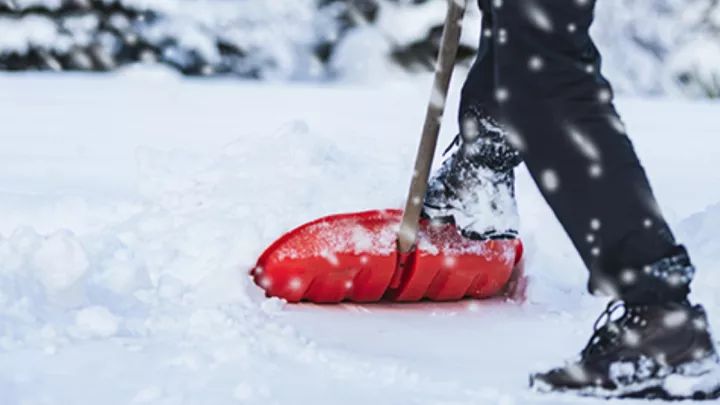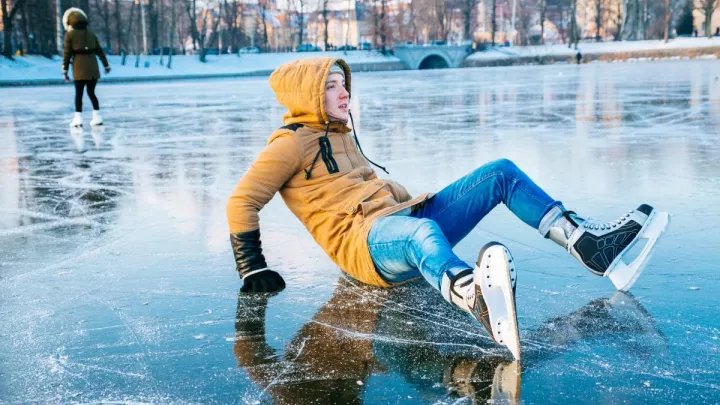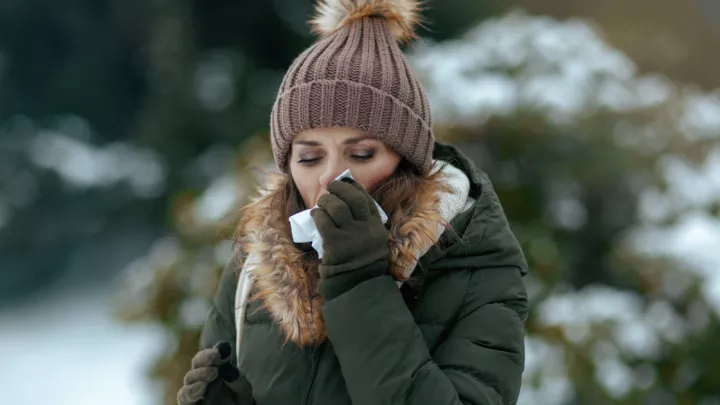A power outage can happen anywhere and anytime. The culprits can range from winter storms, high winds and thunderstorms to tornadoes, earthquakes and hurricanes. Unfortunately, we cannot prevent a power outage when mother nature strikes, but we can take steps to be prepared for the worst and minimize its impact.
“Power outages can be especially dangerous during times of extreme cold or extreme heat, or for those who rely on electricity for medical devices,” notes Joel Haman, Nebraska Medicine Emergency Preparedness coordinator. “The key is being prepared.”
One of the most important things to prepare for a potential power outage during cold weather is to put measures in place to keep you and your family safe and warm, notes Haman.
Basic emergency preparedness begins with creating a family emergency plan and an emergency kit. These two parts of your emergency preparedness planning should include the following:
Your family emergency plan
Your plan will help you and your family know what to do, how to find each other and how to communicate. It should include:
- A meeting place close to home and one farther away in case you have to evacuate
- List of emergency contacts and an out-of-state emergency contact
- Make sure all family members have a way to receive emergency weather alerts during the day and night
- Create an evacuation plan that includes how to exit your home and transportation
- Determine the safest rooms in your home to shelter in place
- Create an emergency kit
- Include additional steps and possible backup power sources for family members with disabilities, medical issues, or require medical equipment for their health and survival. Talk to your doctor to discuss special accommodations in advance
- Practice plan with all family members
Your family emergency kit
- Water: Include one gallon of water per person per day, for at least three days
- Food: Plan for at least a three-day supply of nonperishable foods that do not need to be cooked
- Tools and supplies: Include items such as a manual can opener, battery-operated radio, flashlight, batteries, cell phone with charger, backup power supplies, wrenches, pliers and other basic tools
- Personal items such as personal hygiene items, prescription medications, eyeglasses, contact lenses, shoes, clothes and medical supplies
- Pet supplies
- Documents like insurance policies, bank account info, medical information, etc.
- Extra cash
- Other items: First aid kit, extra blankets, emergency whistle, waterproof matches or lighter, local maps, diapers, formula and baby food and supplies, if needed
Additional winter emergency preparedness tips and tools
Winter power outages require additional emergency preparedness. Consider these tips and other tools to keep you and your family safe and warm. Haman suggests the following.
- Huddle in the smallest rooms or spaces in your house to trap the heat. Try to close off the rest of the house with barriers to keep out cold air.
- Pitch a tent inside a room in your house to make the space smaller and easier to heat. Throw blankets over the tent to help trap the heat. “That alone, with your body heat, may be able to heat up the tent,” notes Haman. Use sleeping bags for extra warmth, if available.
- Install smoke detectors and carbon monoxide detectors in your home. These often can be purchased together as a two in one combo.
- Use painter’s plastic and duct tape to cover windows. This will create an added thermal barrier to prevent heat escape.
- Use your vehicle as a “lifeboat.” Keep your gas tank topped off before inclement weather moves in. “You can use the heater from your vehicle to warm yourself if needed,” says Haman. “Always be sure to pull out of the garage first to prevent carbon monoxide poisoning. Never run a car in a garage.”
- Newer vehicles can be used as a remote power supply. Many tend to come with inverters, so you can plug other items into them with an extension cord such as phones, small space heaters, appliances or electric blankets.
- Candles can be used to generate heat. You can maximize heat from candles with the use of candle lanterns. Candle lanterns can provide enough light and warmth for small spaces and can be used to heat small amounts of water and food. “If you don’t have a candle lantern, place items like bricks or clay terra cotta planters above the flame,” says Haman. “They will absorb the heat much better than the air and will slowly dissipate the heat, giving you longer and greater lasting warmth.”
- Use gas ovens or stoves to heat your space. “Just like the candles, if you place bricks, pots or even rocks in your oven, they will heat up and give off much more heat over longer periods of time, explains Haman. “You can also place jugs of water near the oven or stove. The water will soak up the heat and radiate it out slowly. This will also prevent your water from freezing. Also, consider going to bed with hot thermal water bottles to keep warm. This was a common practice by our forefathers.
- To prevent water pipes from freezing, open up all faucets with a slight drip. “If you are in need of water, don’t forget you have about 50 gallons of water in your water heater tank,” Haman says. “You can drain the water out from the bottom and save it for emergencies.”
- Make use of remote power supplies like gas or solar generators. “Solar generators have come a long way and are quite remarkable and quiet,” says Haman. “Extension cords with splitters become very valuable in this type of situation. If you don’t have a generator, but you have an extension cord, your neighbor may be willing to let you plug into his generator for a bit, and you could offer to help with the fuel.”
- Small booster jumper packs that are normally used for jump-starting cars may have USB chargers on them that can be used to charge cell phones and flashlights.
- Keep an inverter on hand that can be attached to your car battery to generate more electricity. It will include a standard 110-wall outlet that you can use to attach extension cords to for an additional power source.
- Eat the food in your fridge/freezer first. “Just because it’s cold in your house doesn’t mean the items in your refrigerator will stay cold,” notes Haman. “You can also fill containers with water and set them outside to freeze at night. Then place the ice in your refrigerator and freezer to help keep things cold.”
What is hypothermia?
Hypothermia is a real threat during winter storms. It occurs when your body loses heat faster than it can produce it, causing a dangerously low body temperature. Older adults and babies are at the greatest risk for hypothermia.
Signs of hypothermia include:
- Shivering
- Slurred speech or mumbling
- Slow, shallow breathing
- Weak pulse
- Clumsiness or lack of coordination
- Drowsiness or very low energy
- Confusion or memory loss
- Loss of consciousness
- Bright red, cold skin (in infants)
How to treat hypothermia
To treat hypothermia at home, you must warm the body to a normal temperature. Start by covering the person with warm clothing and blankets and giving them warm fluids to drink. Do not place a person in warm water.
“An emergency plan is something you should review, practice and update at least annually,” says Haman. “You will want to make sure your equipment is current and works properly. And, as your family changes, your plan may need to change according to their needs.”




